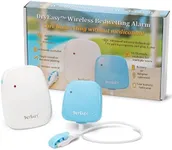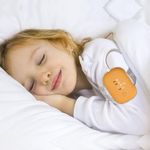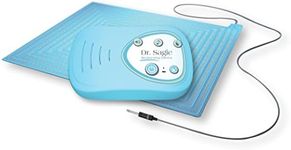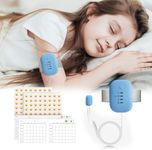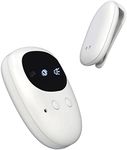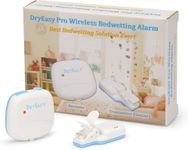Buying Guide for the Best Bedwetting Alarms
Choosing the right bedwetting alarm can be a crucial step in helping manage bedwetting issues effectively. These devices are designed to detect moisture and alert the user, helping them wake up and use the bathroom. When selecting a bedwetting alarm, it's important to consider various features that can impact its effectiveness and ease of use. Understanding these key specifications will help you make an informed decision that best suits your needs or the needs of your child.Sensor TypeThe sensor is the part of the alarm that detects moisture. There are different types of sensors, such as clip-on sensors, pad sensors, and wireless sensors. Clip-on sensors attach directly to the underwear, pad sensors are placed under the sheets, and wireless sensors offer more freedom of movement. Choosing the right sensor type depends on comfort preferences and how sensitive the user is to wearing devices. If the user is sensitive to wearing devices, a pad sensor might be more comfortable, whereas a clip-on sensor might be more effective for active sleepers.
Alarm TypeThe alarm type refers to how the device alerts the user when moisture is detected. Common alarm types include sound, vibration, and light. Sound alarms are loud and can wake up even deep sleepers, while vibration alarms are more discreet and suitable for lighter sleepers or shared bedrooms. Light alarms can be useful for visual cues but may not be effective alone. Consider the user's sleeping habits and environment when choosing the alarm type. If the user is a deep sleeper, a sound alarm might be necessary, whereas a vibration alarm could be better for a shared room.
Volume ControlVolume control allows you to adjust the loudness of the alarm. This feature is important because it lets you customize the alarm to suit the user's sensitivity to sound and the sleeping environment. Alarms with adjustable volume can be set to a lower level for lighter sleepers or increased for those who need a louder alert. Consider how sensitive the user is to sound and whether the alarm will be used in a shared space when deciding on the importance of volume control.
Ease of UseEase of use refers to how simple the alarm is to set up and operate. This includes how easy it is to attach the sensor, adjust settings, and clean the device. Alarms that are straightforward to use are ideal for children or users who may not be tech-savvy. Look for alarms with clear instructions and minimal setup requirements if ease of use is a priority. If the user is a child or someone who prefers simplicity, an alarm with fewer settings and easy attachment might be the best choice.
ComfortComfort is crucial, especially for children who may be sensitive to wearing devices while sleeping. Consider the size, weight, and material of the alarm and sensor. Lightweight and soft materials can enhance comfort and reduce the likelihood of the user removing the device during sleep. If comfort is a priority, look for alarms with ergonomic designs and soft materials. For users who are sensitive to discomfort, choosing a lightweight and unobtrusive alarm can make a significant difference.
Battery LifeBattery life determines how long the alarm can operate before needing a recharge or battery replacement. Longer battery life means less frequent maintenance and ensures the alarm is always ready to use. Consider how often the alarm will be used and the convenience of recharging or replacing batteries. If the alarm will be used nightly, a longer battery life is beneficial to avoid frequent interruptions. For users who prefer low maintenance, choosing an alarm with extended battery life can be advantageous.
